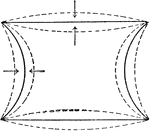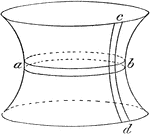Clipart tagged: ‘adhesion’

Capillarity
Capillarity. On the left, water is higher in the smaller tubes due to adhesion. On the right, mercury…

Capillary Water Surface Variation
"Variation in the direction and magnitude of the pressure of the capillary surface due to the form of…

Capillary Water Surfaces
"Diagram showing three soil grains surrounded by water films: Straight arrows indicate direction and…

Remora
"The Remora, the sucking-fish, or sucker. By means of the suctorial disk, a transformation of the spinous…

Behavior of Fibers in Tension Test
"Since the strength of the fibers in adhesion is very much less than in tension and compression, adhesion…

